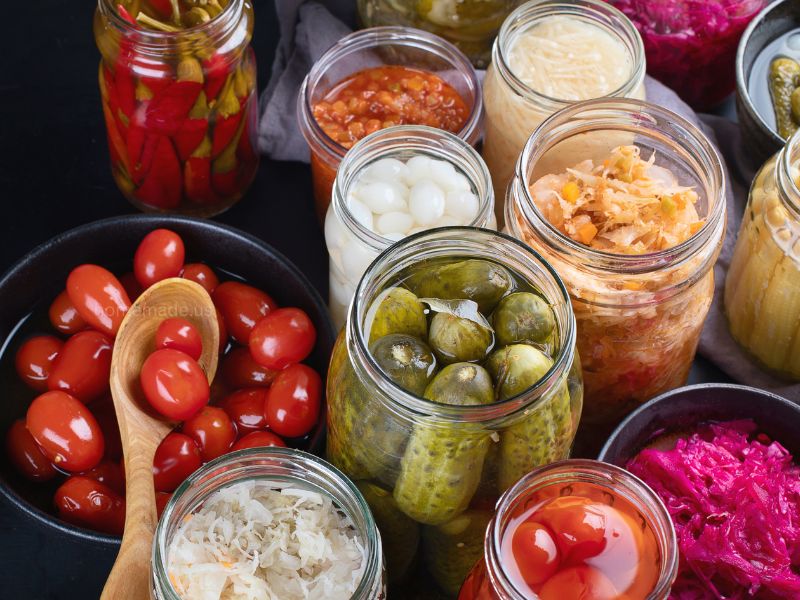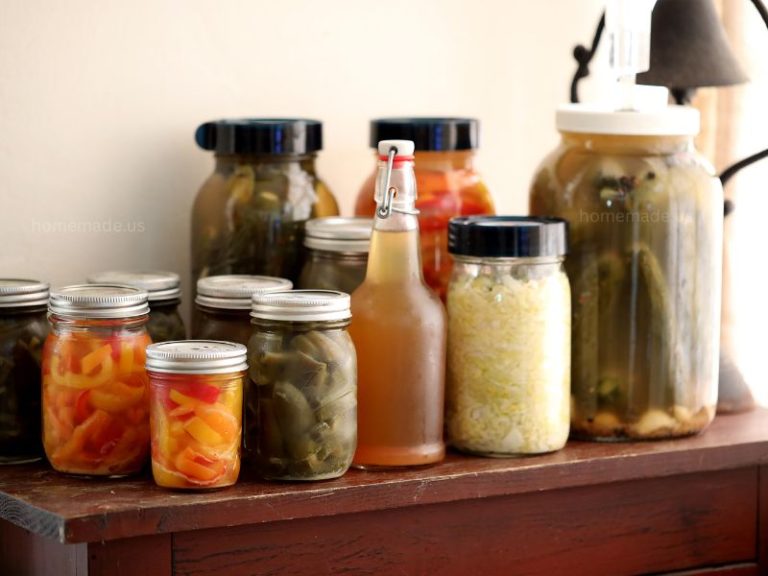Are you tired of the same old boring meals? Do you want to add some excitement to your diet while also improving your health? Look no further than fermented foods! From tangy kimchi to fizzy kombucha, fermented foods are a delicious and nutritious addition to any meal. In this article, we will explore the history and science behind fermentation and provide a comprehensive list of the best-fermented foods to try.
What is Fermentation and How Does it Work?
Fermentation is the process of converting carbohydrates into alcohol or acids by employing microorganisms such as bacteria or yeast. This process has been used for thousands of years to preserve food, enhance flavor, and create new and exciting foods. During fermentation, the microorganisms consume the sugars in the food and produce byproducts like lactic acid or carbon dioxide. These byproducts give fermented foods their characteristic tangy or fizzy taste.
History of Fermented Foods
Fermented foods have been consumed by humans for thousands of years. In fact, many ancient civilizations like the Egyptians, Greeks, and Romans used fermentation to preserve food and create new dishes. The earliest recorded use of fermentation dates back to 6000 BC in China, where people fermented rice to make wine. Throughout history, fermentation has been used to make foods like cheese, bread, and beer.
Health Benefits of Fermented Foods
Fermented foods are not only delicious, but they also provide several health advantages. Fermented foods are rich in probiotics, which are beneficial bacteria that live in your gut and help to maintain a healthy digestive system. Additionally, fermentation can increase the bioavailability of certain nutrients like iron and calcium, making them easier for your body to absorb. Fermented foods have also been shown to boost the immune system and may even reduce the risk of certain diseases like diabetes and heart disease.
List of the Best Fermented Foods to Try
- Kimchi – a Korean dish made from fermented vegetables like cabbage and radish
- Kombucha – a fizzy drink made from fermented tea
- Sauerkraut – a fermented cabbage dish from Germany
- Yogurt – a dairy product made from fermented milk
- Miso – a Japanese paste made from fermented soybeans
- Kefir – a drink made from fermented milk
- Tempeh – a protein-rich Indonesian dish made from fermented soybeans
- Pickles – cucumbers, or other vegetables that have been fermented in brine
- Sourdough bread – bread made from fermented dough
- Kvass – a Russian drink made from fermented bread

Different Types of Fermented Foods and Their Characteristics
Fermented foods come in many different types, each with its own unique characteristics. Some fermented foods are tangy and sour, while others are sweet and fizzy. Fermented dairy products like yogurt and kefir are creamy and tangy, while fermented vegetables like kimchi and sauerkraut are crunchy and sour. Fermented drinks like kombucha and kvass are effervescent and refreshing.
Examples of Fermented Foods from Around the World
Fermented foods are a staple in many different cuisines around the world. In Korea, kimchi is a beloved side dish that is served with almost every meal. In Germany, sauerkraut is a popular topping for hot dogs and sausages. In Japan, miso soup is a comforting and nourishing meal. In Indonesia, tempeh is a protein-rich alternative to meat. Fermented foods are a testament to the creativity and diversity of human cuisine.
Common Fermentation Products and Their Uses
Fermentation can produce a variety of different byproducts, each with its own unique uses. Lactic acid, a product of fermentation, is used to preserve food and give fermented foods their characteristic tangy flavor. Carbon dioxide, another byproduct of fermentation, is used to make fizzy drinks like kombucha and kvass. Alcohol, a byproduct of fermentation, is used to make beer and wine.
How to Make Your Own Fermented Foods at Home
Making your own fermented foods at home is easy and fun! All you need is a few simple ingredients and some patience. To make sauerkraut, simply shred some cabbage, mix it with salt, and let it sit in a jar for a few days. To make kombucha, brew some tea, add sugar and a SCOBY (symbiotic culture of bacteria and yeast), and let it ferment for a week or two. There are endless possibilities for homemade fermented foods, so don’t be afraid to get creative!
Conclusion and Final Thoughts
Fermented foods are a delicious and nutritious way to add variety to your diet. From kimchi to kombucha, there are endless options for fermented foods to try. Not only do fermented foods taste great, but they also provide numerous health benefits. Whether you’re looking to improve your gut health or simply add some excitement to your meals, fermented foods are a great choice. So, the next time you’re at the grocery store, pick up some sauerkraut or kefir and pamper your taste sensations!
© 2016-2023 by Homemade.us. All rights reserved. No part of this document may be reproduced or transmitted in any form or by any means, electronic, mechanical, photocopying, recording, or otherwise, without prior written permission of Homemade.us.

Leave a Reply